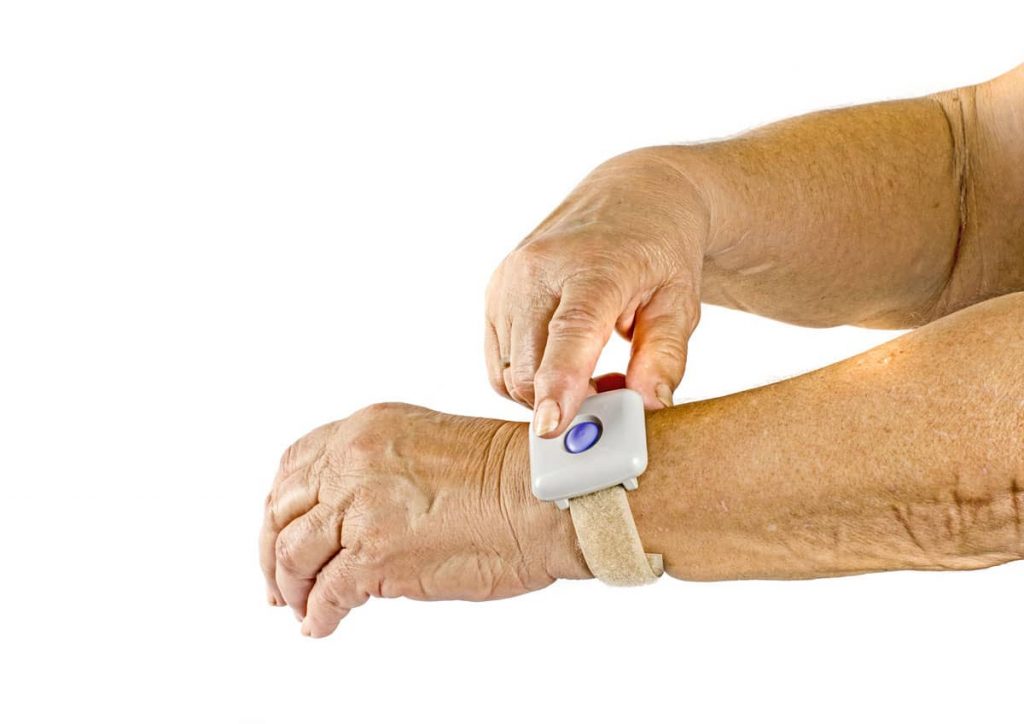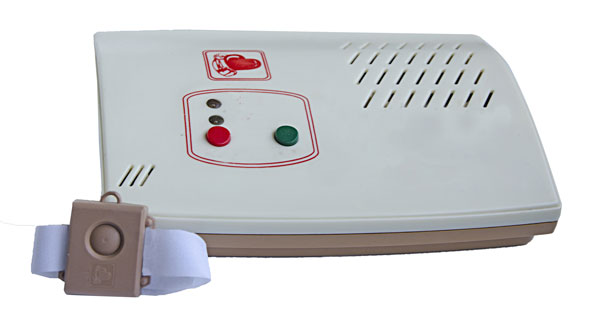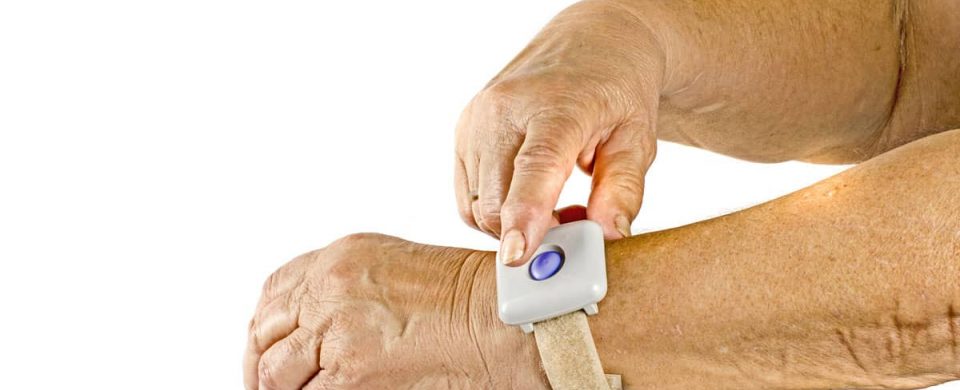
The real cost of medical alert systems in Canada

If you have been looking for an affordable and reliable medical alert system, you probably realized that it is difficult to find the real cost of medical alert systems.
For one thing, many companies don’t publish their exact prices on their websites and you will need to call a number or fill out a form to be contacted by their sales department.
If you need to do this with multiple companies, imagine how much time it will take you before you get some real answers!
Well, we know how important this is so we have made it very easy for you to get actual prices and compare them.
Our network has many partner companies offering medical alert systems and emergency panic buttons.
You just need to fill out our short online form and you will receive multiple FREE and NO OBLIGATION quotes!
What do you pay for a medical alert system?

When you shop for a medical alert system, you will soon find that prices among companies vary widely based on 3 things:
- Equipment cost
- Installation and activation fees
- Monthly monitoring fee
The equipment cost refers to the cost of the device which usually includes a base unit and a portable panic button (bracelet or pendant).
Installation and activation fees also vary widely, with some companies charging at least $99 one-time activation of the system while others have zero installation or activation fees.
Lastly, companies also charge monitoring fees monthly. The lowest price in the market for monthly monitoring fees is currently $19.99 while others charge almost $80.
Now why do these prices differ so much?
First of all, you must understand that medical alert systems were not created equal. They use different technologies and systems and also have different terms and conditions. For instance, some of them require contracts for 24 to 36 months while others have only a month-to-month service.
Further, some systems have more complex features, including a caregiver platform, while others simply offer an emergency button.
Hence, when you compare the cost, you need to figure out what each system offers to compare value vs. price.
Basic Medical Alert system: how it works and what is the cost?
When you buy a basic medical alert system, you will receive a base station and a panic button.
When you press the button, you are immediately connected to a certified monitoring center. The device has a built-in speakerphone that allows you to speak with a trained emergency operator. He can contact a family member for you or an ambulance, if you have a medical emergency.
Depending on your choice of company, you will either pay for the device outright (which means you own it) or pay around $40 monthly to lease the equipment. Under a lease agreement, you will return the device when you terminate the service.
The average cost of the equipment (to own the system) is around $200 and above. When you think about it, it may be cheaper to buy the system in the long run as it could pay for itself in just 6 months.
Upgrades and additional costs: Fall detection and GPS tracking
When you are buying a medical alert system, you don’t go with the lowest price. Keep in mind that you are getting a medical alert system for your safety and well-being. With that being said, you must base your choice on your needs first, then budget, second.
A basic system only monitors you inside your home and it would have a maximum range from the base unit (from 200 ft. to 1000 ft.)
If you live an active lifestyle, spend time outdoors, or have a large home, you have the option to get a wireless system.
Wireless systems provide on-the-go protection, which means they work inside and outside the home. Unlike standard systems that operate with a landline, wireless systems operate over cellular networks.
Wireless systems are more expensive than basic systems. While a basic one could cost from $20 to $25 a month in monitoring fees, a wireless system could cost $30 and up a month.
Further, wireless systems offer optional features such as automatic fall detection and GPS tracking. If you include these features in your plan, you could pay from $45 dollars or more each month.
When you are choosing your medical alert system, you need to think about whether you only need protection inside your home or even outside, and if you need auto fall detection.
Why add fall detection with a medical alert system?

If you are buying a medical alert system for a loved one, it isn’t surprising to hear them say, “I just need a simple emergency button to call 911.”
Well, that may be true but you should know that to summon help in an emergency, the user needs to push the panic button.
If the user falls down, is injured, or unable to press the button, he may lay there for hours without anyone knowing. The panic button won’t do its job unless it is pressed.
This is the advantage that an automatic fall detection offers. If you fall, the system automatically detects a possible fall and alerts the monitoring center. Help will be dispatched, especially if the staff cannot contact you through the 2-way speaker.
This additional layer of protection is essential for individuals with a history of falls or a high risk of falling.
Who needs a medical alert system with automatic fall detection?

Some individuals may be fine with a basic home system, especially if they don’t go outside unaccompanied or those who are confined in a wheelchair or bed. For such individuals, the most important thing is to have an emergency panic button to press in case they have an emergency.
Others, however, will need something more to keep them secure at all times. Fall detection and GPS tracking are recommended for people:
- 65 and older;
- With a history of falling;
- With balance and mobility issues;
- Memory issues;
- Living with medical conditions such as cancer, stroke, heart attack, Parkinson’s disease,
epilepsy, etc.; - Elderly people with Alzheimer’s’ or Dementia;
- Seniors living alone.
A medical alert system can allow you to live alone independently without fear or worry. It can reduce the cost of private home care and ease the burden of care on family members.
We know you don’t want to listen to long sales talks when you are shopping for a medical alert system. However, you still need to know all of the relevant details so you can make a smart choice.
The best thing to do is to simply get the best offers from top medical alert companies in the comfort of your home while you take the time to review them at your own pace! No pressure or lengthy sales pitches.
You can find the right medical alert system that suits your needs by comparing FREE and NO OBLIGATION quotes.
Comparison of Medical Alert System Prices and Features
We know that price is a major consideration when shopping for a good medical alert system. We have made it easy for you to compare the real cost of several medical alert systems and fall detectors in the market.
Below you will find all the information you need about how much you will pay and what you will get in exchange.
Philips Lifeline
The Philips Lifeline GoSafe system comes with an emergency pendant and uses cellular, Wi-Fi, and GPS technologies to track the user’s location. It also offers auto fall detection.
This wireless system protects you at home and outside the home. The equipment fee is $149 and monthly monitoring is about $55 a month.
You can also choose the HomeSafe Plan if you only want home monitoring. The Standard and AutoAlert can be connected to a landline or cellular network and they have no equipment fee. However, they both have an activation fee of $50. The monthly monitoring fee for HomeSafe Standard (landline) is $29.95 and $43.95 (cellular). The monthly monitoring fee for HomeSafe Auto Alert (landline) is $44.95 and $58.95 (cellular).
In addition, you can choose to self-install for a cost of $19.95 or professional installation for $99.
Add-on equipment
Philips Lifeline offers add-on equipment for extra layers of protection such as:
Voice extension communicator ($10)
(for in-home systems only, ideal for medium to large homes)
Lockbox ($29.95)
(recommended for all)
Medication Dispenser ($59.95 + $99 one-time fee)
(ideal for seniors who have difficulty remembering their medications)
While Philips Lifeline is on the pricey side, it does offer a mobile app for caregivers to monitor the user’s status without an additional charge. For those who want an all-in-one system, the GoSafe system is convenient and reliable.
Global Security (Numera Libris)
An innovation of Nortek, this Personal Emergency Response System has a combination of features for complete protection. It boasts of the most accurate fall detection technology in the market.
It comes with a pendant or bracelet which can have access to EverThere, a poweful application that lets people you authorize access your health information and monitor your status.
Water-resistant, the device can be used while in the shower or bath, making sure you have access to your emergency button at all times.
Its basic package costs $34.99 (36-month contract). The GSM package (limited offer) costs $379.95 + $99.00 activation + $79.00 for the panic button.
Global Security is the leading provider of ADT home security systems in Canada and as partnerships with ULC-certified monitoring centers.
It is highly-recommended if you also need a home security system for your total home protection.
Direct Alert
This simple to use medical alert system is available Canada-wide and has lifetime warranty and 24/7 monitoring. It comes with waterproof bracelets or pendants and has a range of 600 to 1000 feet from the console.
Direct Alert has home-use plans, home with fall detection, and wireless systems with GPS monitoring.
Their monitoring centers are Canadian-operated and they don’t require long-term contracts.
The equipment costs $199.95 and $79.95 for a second button. Their basic plan starts at $19.95 per month, the speak-through system costs $29.95 monthly, while the wireless system costs $39.95 monthly.
Life Assure
This medical alert system is also available throughout Canada.
Their Life Assure Mobile Plus allows you to travel confidently, knowing that wherever you are, you have access to emergency services with just a push of the button.
It costs $29.95 monthly for a landline system and $44.95 per month for a cellular system. It has a range of 600 feet and is compatible with fall detection technology.
It offers a 30-day risk-free guarantee (money-back) and has no activation fees. It is one of the most affordable systems in the market.
SecurMedic
This medical alert system for seniors offers an all-in-one health emergency service. It comes with 2-way voice communication connected to monitoring centers that operate 24/7.
All of their monitoring centers are located in Canada and calls are answered by highly-trained professionals.
Included in the system are:
- Emergency button and console
- Optional fall detection button
No contract is required and installation is simple and easy.
The monthly monitoring fees start at $25 a month for the SmartSafe package. SmartSafe with fall detection costs $35 monthly while the SmartSafe Plus (with cellular adaptor) costs $45 a month.
Ordinarily, you need to purchase the equipment with a one-time fee ranging from $188.88 to $328.95. At times, the company has a promotional offer for free equipment (limited time offer) so you should not waste any time.
Getting help in a medical emergency quickly, especially after a fall, will definitely increase the chances of survival and the potential to return to independent living.
To find the right medical alert system that fits your needs and budget, fill out the form below and get accurate quotes from our reputable partners.
Compare in-home and mobile panic buttons for your peace of mind!
The contract period vs. cost of a medical alert system
For many people, the contract period is very important when choosing a medical alert system. This is for practical reasons as well as financial considerations.
Most medical alert system companies require a contract of 24 to 36 months for the monitoring service. Since companies invest a lot of money into their operations, they calculate profitability based on monthly fees over the term of the contract.
In doing so, customers also benefit because services from companies requiring contracts are generally better than month-to-month services. Furthermore, the companies are able to keep the monthly fees down as the cost is distributed over a guaranteed contract period.
There are, of course, medical alert companies that don’t require any contracts and can be cancelled without a penalty. You may find out that the monthly fees are higher under these terms.
A few important points to remember:
· A medical alert system with a long-term contract is probably not best if the senior may enter a nursing home in the near future. This is also true for critically-ill patients.
· Companies offer conversion to month-to-month service after the initial contract.
· Some companies offer cancellation without a penalty if the user enters long-term care or hospitalization or if the user dies. Documentation may be required.
· Relatively-healthy seniors may benefit from medical alert systems with contracts as they could find lower rates and use the system for many years.
· Some companies with lower monthly fees don’t offer advanced features such as automatic fall detection or GPS tracking.
FAQs about medical alert systems you want to know
We know you want to make sure that you are buying a medical alert system for the right price. Hence, we put together some frequently asked questions to help you in your decision-making.
What happens if I terminate the monitoring service?
If you are tied to a contract, you may be charged a penalty for canceling the service. Companies calculate their price based on the length of your contract. If you don’t complete the term, they would suffer a loss, hence, a penalty.
For this reason, it is important to check the length of the contract and the cancelation fee before you sign up for the service. It is also good to check what areas they cover in case you have to move to another location to avoid service interruption.
Do I have to pay upfront for the system?
It is a good idea to shop around because the equipment cost varies widely. Some companies offer free equipment when you sign up for monitoring services. The cost of the lease will be included in your monthly charges. Some companies require the purchase of the system which can be paid upfront or in installments billed monthly together with the monitoring fees.
Why do companies charge different monthly fees for the monitoring service?
The companies offering monitored medical alert systems use different technologies and systems. They also have different monitoring centers. Quality always plays a role in pricing and companies with more advanced technologies (fall detection, geo-fencing, proprietary software) will naturally charge a higher price.
What is the average cost of monthly monitoring for medical alert systems?
Most providers charge between $20 to $30 for monthly monitoring of medical alert systems. The price can be higher if you have add-ons such as fall detection or GPS tracking.
What kind of emergency assistance can I get from a medical alert system?
It is safe to say that you can get help for any type of emergency. If it is a minor or non-medical emergency, the monitoring center can contact a next of kin or a neighbor on your contact list. For serious emergencies, the center can dispatch the police, fire department, or an ambulance. Someone will be on the line with you until help arrives.
What happens if I have an emergency and can’t press the panic button?
It is important to have your panic button at all times. You need to press the panic button to summon emergency assistance. Other systems have automatic fall detection which sends an alert if you fall and can’t press your panic button. In most cases, however, the user must send the alert using the emergency button or built-in speakerphone to contact the monitoring center.
Is there a charge for pressing the emergency button?
No, you won’t be charged for pressing the emergency button. The service is already part of your service agreement.
Can I cancel an alert if I press the emergency button by accident?
Yes, you can cancel a false alert by pressing the button a second time or speaking to the contact center by speakerphone.
Request free quotes for the best medical alert system
Our network has medical alert partners offering the most advanced and reliable systems for seniors and other individuals at risk.
Whether you need an in-home system or a cellular system with automatic fall detection, we can provide you with accurate and competitive quotes to compare.
This service is free and no obligation so you can compare in the comfort of your home without any risk.
Just fill out the form below to get FREE and NO COMMITMENT quotes for the best medical alert systems in your area!
Comments are closed.

Copyright© 2024 Compare Home Quotes.
Oolong Media






